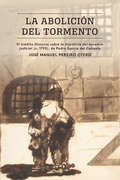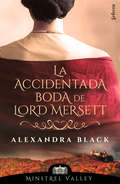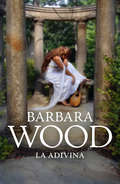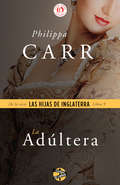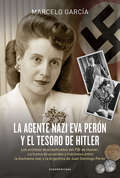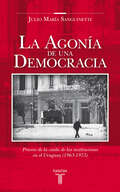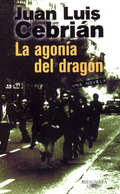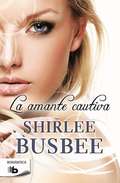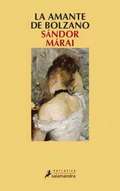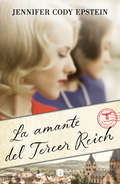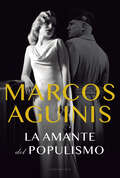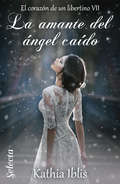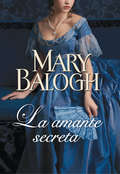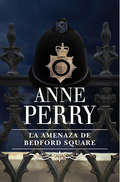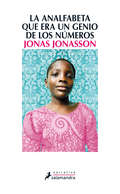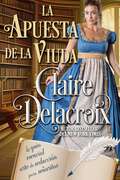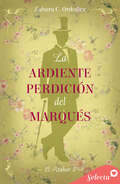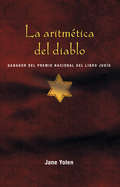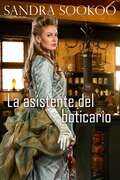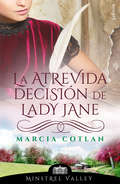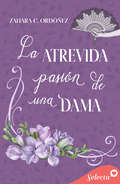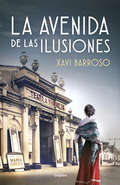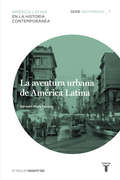- Table View
- List View
La abolición del tormento: El inédito Discurso sobre la injusticia del apremio judicial (c. 1795), de Pedro García del Cañuelo (North Carolina Studies in the Romance Languages and Literatures #314)
by José Manuel Pereiro OteroJunto a la erradicacion de la esclavitud y de la pena capital, la abolicion del tormento configura durante el siglo XVIII una de las disputas intelectuales mas incisivas de la Europa continental. Una importante e inedita pieza de esta controversia juridica, politica y social en la Espana de la epoca es el Discurso sobre la injusticia del apremio judicial, donde se argumenta a favor de prohibir este y otros metodos legales de coercion fisica y mental. A mediados de la ultima decada del setecientos, su autor, el abogado Pedro Garcia del Canuelo, trata de publicarlo y busca la mediacion de Manuel Godoy. Sin embargo, el futuro Principe de la Paz rechaza proteger el manuscrito y advierte al autor sobre posibles repercusiones si continua examinando dicho asunto. En consecuencia, aunque el titulo ha pasado al registro historico en contadas referencias indirectas, su contenido se creia perdido. La abolicion del tormento no solamente rescata la figura y el trabajo de su autor, sino que analiza, transcribe y reproduce el texto. Ademas, aparte de estudiar las repercusiones de este debate intelectual en ensayos, dramas, textos narrativos y articulos periodisticos, examina los fundamentos filosoficos y legales de la controversia sobre la tortura juridica en Europa y, particularmente, en Espana. La disputa en la que participa el Discurso sobre la injusticia del apremio judicial refleja las tensiones politicas, juridicas y sociales de la epoca, ya que el debate sobre la legitimidad de la tortura implica considerar planteamientos cuya relevancia no se limita al siglo XVIII. Entre ellos se encuentran, por ejemplo, como se puede articular la relacion entre legalidad y justicia, que criterios se usan para definir a un ser humano, que principios establecen el valor intrinseco de la existencia individual, asi como que circunstancias condicionan la igualdad ante la ley, y cuales son los limites del poder legitimo cuando este suspende los derechos naturales, politicos y civiles del ciudadano. Ampliamente documentado, este estudio es de particular interes para quienes reflexionen sobre los cambios en los procesos legales y en las practicas politicas durante la transicion entre el Antiguo Regimen y el liberalismo moderno.
La accidentada boda de lord Mersett (Minstrel Valley #Volumen 8)
by Alexandra BlackContinúa la rompedora serie de «Minstrel Valley», creada por trece autoras de Selecta. Ambientada en la Inglaterra de la Regencia en un pequeño pueblo de Hertfordshire, descubrirás una historia llena de amor, aventuras y pasión. Oriente y occidente unidos en un apasionado romance en los albores del siglo XIX. Derek Lee, conde de Mersett, se enamora de Daphne desde el primer momento en que la ve, a pesar de que ambos son unos niños. Cuando esta se convierte en la protegida de su padre, descubre que nunca habrá otra mujer para él. Sin embargo, tras una serie de sucesos, tres años después de encontrarse con ella la abandona de nuevo para regresar a China y Daphne acaba casándose con otro hombre. Daphne también sabe que no habrá otro hombre en su vida aparte de Derek, pero cuando las circunstancias los separan, decide seguir su camino, porque no puede esperar a que regrese. Cinco años más tarde, el conde regresa y descubre que Daphne ha enviudado, así que decide ayudarla a rehacer su vida. La acompaña a Mnstrel Valley y vive pendiente de sus necesidades. No ha dejado de amarla, pero no quiere arrastrarla a su mundo, así que impone unas normas que los llevan a mantener una relación platónica y clandestina durante cinco años. Pero Daphne no está dispuesta a dejar que se salga con la suya por más tiempo. ¿Será capaz de derribar las barreras que el conde ha levantado entre ellos o su cruzada está abocada al fracaso? Sobre la serie:Minstrel Valley es un proyecto novedoso, rompedor y sorprendente. Trece mujeres que crean una serie de novelas gracias a una minuciosa organización que ha llevado tiempo y esfuerzo, pero que tiene su recompensa materializada en estas catorce novelas que vamos a disfrutar a lo largo esta temporada.Esta labor de comunicación entre ellas, el apoyo mutuo, la coordinación y coherencia no hubiese sido posible sin nuestras queridas autoras, que hacen visible que con cariño, tiempo robado a sus momentos de ocio, de descanso y de familia, confianza, paciencia, esmero y talento, todo sea posible. Desde Selecta os invitamos a adentraros en Minstrel Valley y que disfrutéis, tanto como nosotros, de esta maravillosa serie de regencia. Prólogo de Nieves Hidalgo en Si me lo pide el corazón (Minstrel Valley 1):«Serán novelas divertidas, románticas, dulces, plenas de sentimiento, con personajes que os enamorarán; hasta con leyenda incluida. Historias paridas por la imaginación de unas autoras merecedoras de elogio, no ya solo por su capacidad para ilusionarnos, su disposición a compartir sino, sobre todo, por la manera encomiable de aplicarse al trabajo para ofreceros lo mejor de sí mismas.»
La adivina
by Barbara WoodLa vida de una asombrosa joven con un papel crucial en el Imperio romano. Una gran historia de amor, fe y valor. Roma, 54 d. C. Ulrika, una joven de 19 años, es la hija de una sabia curandera que siempre le ha contado que su padre murió hace años en una batalla. Desde la infancia, Ulrika tiene visiones y un sueño recurrente sobre un lobo que no sabe interpretar. Ante la inquietud de su hija, la curandera decide confesarle la verdad sobre su padre: está vivo y es un gran líder germano llamado Wolf («lobo»). Ahora que Ulrika sabe descifrar el significado del sueño, tiene que encontrar a su padre para avisarle de que un general romano va en su busca con la intención de acabar con él y con todo el pueblo.
La adúltera
by Philippa Carr Estela CantoCasada con un amigo de infancia, Zipporah disfruta de su vida apacible y convencional. Atrás queda el legado de escándalo de su abuela Carlotta. Viaja a Eversleigh, ese sitio cargado de malicia y de peligro, solo para atender la llamada de un anciano moribundo. Pero cuando deja Eversleigh Court, Zipporah ya no será la misma.Incapaz de resistir la sensualidad de un extranjero, Zipporah sucumbe frente a Gérard d'Aubigné y se embarca en una aventura ilícita cuya recompensa es un secreto agobiante. Pronto, el espíritu de Carlotta Eversleigh se enseñorea de su vida, mientras el escándalo, la violencia y el engaño amenazan con destruirla. Nadie saldrá indemne, ni siquiera su hija.
La agente nazi Eva Perón y el tesoro de Hitler: Los archivos desclasificados del FBI de Hoover. La trama de acuerdos y traiciones entre la Alemania nazi y la Argentina de Juan Domingo Perón
by Marcelo Damian GarcíaUn recorrido por las relaciones entre Juan Domingo Perón, Eva Duarte y el nazismo alemán tras la derrota, avalado por las investigaciones que mandó a realizar Hoover al frente del FBI. Con la debacle nazi consumada, el tablero de la política internacional comienza a reacomodarse. Mientras Adolf Hitler, en el exilio, pierde fuerza e influencia, Juan Domingo Perón -alentado por las circunstancias- se propone erigir a la Argentina como una nación rectora de Sudamérica, tomando la posta de la derrotada Alemania e intentando replicar su ímpetu expansionista en la región. ¿Cómo pretende Perón financiar sus planes de dominación? Mediante el expolio de las millonarias fortunas que fueron secuestradas por el nacionalsocialismo alemán y pacientemente trasladadas hasta Buenos Aires. Su mayor obstáculo será nadie menos que su propia esposa, Eva Duarte, quien pondrá en acción sus poderosas conexiones para salvaguardar esos tesoros. La agente nazi Eva Perón y el tesoro de Hitler nace del trabajo de investigación y consulta de cientos de documentos desclasificados -entre ellos, los de las pesquisas que mandó a hacer John Edgar Hoover cuando se encontraba al frente del FBI-, sobre los cuales el historiador Marcelo García construye una irresistible tesis destinada a entrelazar la inesperada y atrapante trama internacional de acuerdos y traiciones entre la Alemania nazi y la Argentina de Perón. El resultado de este enorme trabajo es un libro que revisa uno de los misterios más magnéticos del peronismo desde una perspectiva nueva: la de los conflictos de intereses entre sus dos más grandes figuras.
La agonía de una democracia
by Julio María SanguinettiUna dictadura que no se explica sin la aparición de una guerrillaanterior. En esa diálectica de la fuerza se perderá primero latolerancia y luego la libertad. El 8 de febrero de 1973 irrumpe el Ejército en el escenario políticonacional. Desacata al presidente y emite dos comunicados con suprograma. Pese al apoyo de la Armada comandada por el contralamiranteZorrilla, el presidente Bordaberry capitula en la base de Boiso Lanza.Este proceso de decaimiento institucional culminará en la madrugada del27 de junio del mismo año, cuando el Ejército cierre el Parlamento y loocupe por la fuerza.Se clausura en ese momento una década de enfrentamientos, iniciada en1963, cuando se registró la primera acción de una violencia políticadirigida a sustituir el régimen democrático por un gobierno revolucionario, inspirado en Cuba.
La agonía del dragón
by Juan Luis CebriánLa agonía del dragón recorre las postrimerías del franquismo a través de una generación que posibilitó la llegada de la democracia a España. La primera entrega de una saga que comienza en España en 1968. Abarca cinco años clave en la posterior evolución de la vida política española, lo que podríamos llamar era Carrero, hasta su asesinato en 1973. Tiempos de transformación en una dictadura que parecía eterna. Un drama cuyos personajes -los históricos y los novelescos- tienen encarnadura literaria y representan distintas formas de la pasión y del compromiso. Desde los fascistas a los revolucionarios de extrema izquierda en una amplia gama de posibilistas, acomodaticios, ambiciosos, neuróticos...
La amante cautiva: Campaña San Valentin (Romántica Bolsillo Ser. #Vol. 7)
by Shirlee BusbeeUna novela que lo tiene todo, un argumento que atrapa, una trama bien urdida, unos personajes principales apasionantes y unos secundarios inolvidables. La bellísima y voluntariosa Nicole Ashford aún no conoce lo que es la pasión, pero está destinada para la aventura y el placer más de lo que podría imaginar cualquier mujer de su tiempo. Burlando un despiadado complot contra ella, huye de su aristocrático hogar inglés en un barco corsario con rumbo a los fastuosos refugios de piratas de Nueva Orleans y el exquisito abandono de las recónditas cuevas de las islas Bermudas. Sin embargo, la misma osadía de su fuga la lanza a un peligro aún mayor, como la amante cautiva de un notorio bandido de los mares, el Capitán Sable, cuyos besos, tiernos y apasionados, se apoderan de su alma. ¡Y nada conseguirá apagar las llamas del amor para el cual ambos han nacido!
La amante de Bolzano
by Sándor MáraiDos hombres, una mujer y la huella imborrable del tiempo: La tercera obra de Márai en abordar estos elementos universales. Esta novela escrita en 1940, después de Divorcio en Buda y La herencia de Eszter y antes de la sublime El último encuentro, culmina asimismo con un conmovedor duelo verbal y psicológico, de múltiples connotaciones, que invita a la reflexión. Y aunque en esta ocasión Márai haya escogido un personaje histórico como Giacomo Casanova, el desarrollo de la narración deja bien claro que, más allá de su dimensión real, el famoso gentilhombre veneciano representa el arquetipo del aventurero intrépido, amoral y sin escrúpulos, un símbolo del hombre que, en su afán por encontrar la felicidad, destruye los medios para alcanzarla. Fugitivo de la justicia, Casanova se refugia en Bolzano, ciudad donde reside la única mujer que ha amado en toda su vida. Pese a los años transcurridos desde que perdióa Francesca en un duelo con el conde de Parma, el gran seductor nunca ha podido desprenderse del anhelo de poseer a la otrora bellísima joven. Ahora, el destino pone en sus manos la gran ocasión de saciar su deseo insatisfecho: el conde, viejo, cansado y temeroso de perder a su mujer, que sigue enamorada de Casanova, le ofrece dinero y libertad a cambio de decepcionar a Francesca, para lo cual el cínico y superficial mujeriego deberá, en el transcurso de unas horas, realizar la actuación más difícil de su largo historial donjuanesco. Al caer la noche, mientras Casanova se prepara para acudir al baile de máscaras, Francesca lo sorprende presentándose en su aposento. Antes del alba, con el único instrumento de un discurso sincero y apasionado, la amante ingenua despojará al curtido aventurero de todas sus máscaras, obligándolo a enfrentarse con el terror del vacío, la soledad y el exilio. Reseña:«En La amante de Bolzano, Márai construye un magnífico tratado sobre la pasión absoluta, sobre el deseo y la nostalgia.»La Repubblica «Un diálogo de juego y exhibición dialéctica donde los contrincantes son el amor y la seducción.»El País «La amante de Bolzano es un Sándor Márai genuino, tanto en su concepción trágica de la llama, siempre traicionada, del amor y de la generosidad espiritual, como en la estructuración de un clímax narrativo de tradición escénica.»Quimera «La comprensión del siglo XX quedaría incompleta sin la literatura de Márai.»Letras
La amante del Tercer Reich
by Jennifer Cody EpsteinEl retrato íntimo de una amistad que el nazismo rompió para siempre. Berlín, año 1933. Renate e Ilse se conocen en la escuela y se hacen amigas inseparables, unidas por su pasión por el conocimiento. Pero a medida que el partido nazi gana posiciones en la ciudad, las leyes de Nuremberg pondrán en peligro una amistad que parecía destinada a durar eternamente. Ilse se siente cada vez más atraída por las Juventudes Hitlerianas, mientras que Renate se ve forzada a confrontar un secreto familiar que su familia ha ocultado durante décadas. Una historia de traición y remordimientos que no tendrá su cierre hasta el año 1989, cuando, en Nueva York, Ava Fischer recibe las cenizas de su madre, a la que nunca acabó de conocer bien, junto con un paquete de cartas que no llegaron a enviarse, dirigidas a la mejor amiga de infancia de Ilse, Renate. La crítica ha dicho:«Una absorbente exploración de la amistad, la traición yla posibilidad de cerrar las heridas del pasado.»Booklist
La amante del populismo
by Marcos AguinisUn reportaje histórico a Margherita Sarfatti, amante y biógrafa de Benito Mussolini, que devela detalles inéditos sobre la vida y la trayectoria del dictador y abre la puerta a una lúcida y reflexiva lectura sobre los fascismos y populismos contemporáneos. Margherita Sarfatti (1880-1961), periodista e intelectual italiana hija de una rica familia veneciana de origen judío, fue biógrafa de Benito Mussolini -además de su amante por veinte años- y compartió con él momentos decisivos en la fundación y el crecimiento del movimiento fascista. Marcos Aguinis, tras una extensa y rigurosa investigación, recupera su voz y la despliega en un notable reportaje histórico en el que, a partir de la obra escrita de Margherita, y a través del ensamble de historia, crítica, ensayo y mucho de novela, construye una entrevista singular, en más de un sentido reveladora. La conversación, siempre amable pero nunca complaciente, se desarrolla ágil, aguda, inteligente y desparpajada; en su decurso ningún aspecto de la vida privada y de la acción pública del hombre que impuso a Italia un régimen totalitario y autocrático es dejado de lado, ningún detalle es eludido. Por estas páginas desfilan las primeras armas de Mussolini como periodista, su carrera militar, su ascenso político, su vínculo con Adolf Hitler y su decisiva participación en la Segunda Guerra Mundial, pero también su volcánica intimidad y los aspectos más oscuros de su personalidad. Auténtica obra maestra, La amante del populismo ratifica a Aguinis como uno de los intelectuales más lúcidos de nuestro tiempo.
La amante del ángel caído (El corazón de un libertino #Volumen 7)
by Kathia Iblis¿Aquello que nació bajo la luna llena entre las dunas del desierto del Sahara tendrá una oportunidad? Su Alteza el príncipe Farid Haidar Al-Zaidani ha dejado su vida en Arabia para instalarse en Londres donde está decidido a continuar con su vida. Excepto por un detalle: que no tiene a su lado a la joven de cabellos de bronce que conoció en medio del desierto y le robó algo más que su atención. Evelyn Moore, hija de arqueólogos, finalmente ha regresado a Londres después de haber pasado unos meses en el desierto. Sin embargo, no puede olvidar lo que ocurrió con un misterioso extraño una encantadora noche y que quedó grabado en su alma. ¿Lograrán los dictámenes sociales y enemigos inesperados separarlos?
La amante secreta (Amantes #Volumen 3)
by Mary BaloghLa última entrega de la trilogía Amantes El amor aparece de pronto donde nadie lo espera. Lady Angeline Dudley espera en una posada a que su hermano, el duque de Tresham, la recoja para escoltarla hasta Londres, donde será presentada en sociedad. Edward Ailsbury se dirige al mismo destino para asumir sus obligaciones como nuevo conde de Heyward. Al ver a esa bella joven queda tan impresionado que no duda en intervenir cuando lord Windrow intenta propasarse con ella. Este será el primero de una serie de encuentros entre Angeline y Edward. La familia de él, empeñada en buscarle esposa, ha decidido que ella es la candidata ideal. Angeline, por su parte, cree haber encontrado a un hombre tan impetuoso como ella. Pero hay un pequeño problema... Edward siempre había dado por sentado que se casaría con Eunice, su amiga de la infancia.
La amenaza de Bedford Square (Inspector Thomas Pitt #Volumen 19)
by Anne PerryEl inspector Pitt y su inteligente esposa Charlotte se enfrentan a un caso de asesinato cuya investigación les llevará a destapar unas perversiones y unas carencias de moral mucho mayores de lo que podrían llegar a imaginar. La decimonovena novela de la serie del inspector Pitt Cuando en una respetable y elegante mansión de Bedford Square se encuentra el cadáver de un hombre asesinado, el más experto y conflictivo policía victoriano de Londres, Thomas Pitt, acude raudo al lugar de los hechos. Tanto la casa como una cajita de rapé encontrada en el cuerpo pertenecen al muy respectado general Balantyne, un amigo de Charlotte, la esposa de Pitt, y ampliamente conocido en los mejores círculos sociales. A medida que se va involucrando en la investigación de este asesinato y en un caso de chantaje, Pitt se verá inmerso en medio de una terrible lucha para salvar lo que siempre ha intentado preservar: la integridad de la policía de Bow Street. La crítica ha dicho... «Con un extraño asesinato y una corrupta e hipócrita sociedad victoriana, Anne Perry construye una novela de intriga que impresionaría al propio Charles Dickens.» New York Times Book Review
La analfabeta que era un genio de los números
by Jonas JonassonDespués del éxito mundial de El abuelo que saltó por la ventana y se largó, Jonas Jonasson vuelve a deleitarnos con una novela tan desenfadada como llena de sorpresas, una historia trepidante que arremete contra la hipocresía de la clase política al tiempo que ilumina la cara oculta de la historia oficial. En esta ocasión, la improbable heroína tiene su origen en el barrio de Soweto, el tristemente célebre gueto de Johannesburgo. Corren los años setenta, en pleno auge del apartheid, cuando Nombeko Mayeki, condenada a una vida de infortunio y con altas probabilidades de que ésta acabe a una edad temprana ante la indiferencia de sus semejantes, encuentra un resquicio para escapar de su aciago futuro. Dotada de un intelecto fuera de serie, e impulsada por la fuerza de un destino que ejecuta las piruetas más extrañas, el azar propulsa a Nombeko lejos de su entorno de miseria y la encarrila en un asombroso viaje en el que se topará con personajes de toda índole, desde un falso especialista en física nuclear y un par de agentes del Mossad con sed de venganza, hasta un rey de Suecia con rostro humano y una joven antisistema en permanente estado de ebullición. Así, la genial Nombeko recorrerá un insólito itinerario, repleto de emocionantes peripecias, hasta convertirse en una mujer clave para la supervivencia de la humanidad y, a la postre, descubrir su lugar en el mundo en las frías tierras escandinavas, un sitio con el que jamás se habría atrevido a soñar. La crítica ha dicho...«Jonasson lo ha logrado de nuevo [...]. Muy entretenido, brillante, con trasfondo político. Y alocadamente divertido.»Correspondenten «Una vez más, un triunfo maravillosamente sorprendente.»Metro «Ya he empezado a leerla por segunda vez.»Värnamo Nyheter «Jonasson relata magníficamente historias improbables [...] con un humor malicioso, un poco a la manera del Cándido de Voltaire. Sin duda, se ganará de nuevo el aplauso de los lectores.»Lire «La analfabeta que era un genio de los números no deja de lado algunas reflexiones geopolíticas y, a diferencia de El abuelo que saltó por la ventana y se largó, no busca sólo la seducción inmediata. Es más profunda.»Livres Hebdo
La apuesta de la viuda (La guía esencial del arte de seducción para señoritas #3)
by Claire DelacroixSe casó una vez por deber, pero sólo se volverá a casar por amor... Desde que tiene memoria, el corazón de Eliza North ha estado en posesión del mejor amigo de su hermano mayor, Nicholas Emerson. Pero él siempre ha sido ajeno a ella, y cuando compró una comisión y marchó a la guerra, ella se casó en su lugar. De regreso a casa de su hermano como viuda, se reencuentra con el capitán Emerson y se da cuenta de que ninguno de sus sentimientos había cambiado. Acepta la petición de este de ser la acompañante de su hermana menor, Helena, con la esperanza de poder ganarse su atención, sobre todo con la ayuda de los misteriosos consejos de la señora Oliver y su guía de seducción. Nicholas Emerson nunca podría aspirar a casarse con la hija de un duque, especialmente con una tan pragmática como Eliza. Que se casara por amor le hace preguntarse hasta qué punto conocía a la joven después de todo. Ella seguía siendo la única mujer que captaba su atención, pero él sabe que sus heridas significan que nunca podrá casarse con ella. Aun así, no puede resistirse a la oportunidad de solicitar la ayuda de Eliza para la segunda temporada de Helena y la oportunidad, gracias a eso, de estar en su compañía. Ninguno de los dos prevé el comportamiento salvaje de Helena, ni su necesaria alianza para defender su reputación. Eliza confía en el manuscrito de la señora Oliver para seducirlo y, para asombro de Nicholas, pone en prácticas sus consejos. ¿Cómo puede rechazar a la mujer que ama, aun sabiendo que nunca podrá asegurar su felicidad? Atrapado entre el honor y el amor, Nicholas deberá aceptar las consecuencias que le ha dejado la guerra para asegurar su futuro con la mujer que ama; ¿será Eliza la mujer que cure sus heridas para siempre?
La ardiente perdición del marqués (El azahar #Volumen 5)
by Zahara C. Ordóñez«Pensé que nunca me importarías y ahora me descubro pensando en ti a cada hora; anhelando besar tus labios; deseando que me digas que sin mí tampoco puedes vivir». Beatriz Alborada recibe la petición de matrimonio de un hombre veinte años mayor que ella y de buena posición. Esa oferta es la más ventajosa de cuantas ha tenido y sabe que, aunque no lo ame, las circunstancias la obligan a aceptarlo. Resignada a ello, ve pasar los días hasta su boda. El Marqués Jaime de Mondragó sufre un accidente en su viaje que lo obliga a permanecer en casa de los Alborada. Es un hombre muy apuesto, y su llegada provoca un revuelo sin igual. Sobre todo porque tiene una fama terrible de pendenciero y hay rumores de que está arruinado. Pero el corazón no entiende de dinero o de habladurías, y en cuanto Jaime y Beatriz se conocen surge entre ellos una atracción que los arrastra el uno al otro. Una atracción que tendrá consecuencias.
La aritmética del diablo
by Jane YolenGanador del Premio Nacional del Libro Judío Hannah está cansada de las fiestas religiosas; su familia solo habla del pasado. De hecho, le parece que eso es lo que hacen en todas las fiestas judías. Pero este año, el Seder de Pesaj será diferente, Hannah será transportada misteriosamente al pasado... y solo ella conoce los horrores indescriptibles que le esperan.
La asistente del boticario
by Sandra SookooCuando el destino llama puedes huir o quedarte a pelear por lo que siempre haz querido. De cualquier manera no tendrás más opción que cambiar. La señora Ava Southerly, asistente del boticario y viuda, vive con miedo. Se ha hecho experta en esconderse para detener sus visiones del futuro. En el año 1885, cosas como las brujas ya no existen, sin importar su linaje. Si mantiene su corazón libre de emociones, sus poderes sobrenaturales permanecerán dormidos y la gente que ama no será lastimada, pero anhela la aceptación y el romance. Douglas Wallace, doctor americano y descendiente de un cazador de brujas escocés, está en Londres para dar una serie de conferencias sobre nuevas técnicas y descubrimientos médicos. Al ver pasar a una hermosa rubia por la ventana de un restaurante, siente la necesidad de seguirla, como si sus vidas estuvieran ligadas en un nivel sobrenatural. Aunque él cree en la lógica y la evidencia de sus propios ojos, el pasar tiempo en la compañía de Ava le muestra lo equivocado que está. Cuando un espíritu malvado de 300 años posee a Douglas en un esfuerzo por matar a Ava por ser bruja, ella y el doctor deben encontrar la manera de impedir esta amenaza del más allá, a pesar del peligro. Mientras su relación evoluciona en algo más profundo y duradero, descubrirán qué tan fuerte es el amor verdadero.
La atrevida decisión de Lady Jane (Minstrel Valley #Volumen 14)
by Marcia CotlanContinúa la rompedora serie de «Minstrel Valley», creada por catorce autoras de Selecta. Ambientada en la Inglaterra de la Regencia en un pequeño pueblo de Hertfordshire, descubrirás una historia llena de amor, aventuras y pasión. Una apasionante encrucijada entre el deber y el amor. Lady Jane Walpole ha tenido una vida dura y llena de humillaciones, así que se jura a sí misma que utilizará su belleza para conseguir un matrimonio ventajoso. Ha puesto su mirada en un futuro duque y parece que está a punto de lograr su más ansiado deseo. Justo entonces, se cruza en su camino Hugh Turner, el hombre más atractivo y, sobre todo, el más orgulloso que ella ha conocido jamás, ¡y eso que está muy lejos de ser un hombre rico y encumbrado! O eso cree ella, al menos. Sin querer, Jane hiere el orgullo del señor Turner y a partir de ese instante, su vida se convierte en un vaivén de huidas y encontronazos con el caballero, que no oculta el desdén que la joven le produce. Sobre la serie:Minstrel Valley es un proyecto novedoso, rompedor y sorprendente. Catorce mujeres que crean una serie de novelas gracias a una minuciosa organización que ha llevado tiempo y esfuerzo, pero que tiene su recompensa materializada en estas quince novelas que vamos a disfrutar a lo largo de esta temporada. Esta labor de comunicación entre ellas, el apoyo mutuo, la coordinación y coherencia no hubiese sido posible sin nuestras queridas autoras, que hacen visible que con cariño, tiempo robado a sus momentos de ocio, de descanso y de familia, confianza, paciencia, esmero y talento, todo sea posible. Desde Selecta os invitamos a adentraros en Minstrel Valley y que disfrutéis, tanto como nosotros, de esta maravillosa serie de regencia. Prólogo de Nieves Hidalgo en Si me lo pide el corazón (Minstrel Valley 1):«Serán novelas divertidas, románticas, dulces, plenas de sentimiento, con personajes que os enamorarán; hasta con leyenda incluida. Historias paridas por la imaginación de unas autoras merecedoras de elogio, no ya solo por su capacidad para ilusionarnos, su disposición a compartir sino, sobre todo, por la manera encomiable de aplicarse al trabajo para ofreceros lo mejor de sí mismas.»
La atrevida pasión de una dama
by Zahara C. Ordóñez¿Qué dama puede resistirse a un bandolero cuando este decide robar un corazón?Y ¿qué forajido, por más intrépido que sea, puede escapar de una dama cuando esta se lo propone? Lady Violet Waverley, a juicio de muchos, es una solterona. No le importa. Es feliz viajando por España. El amor no entra en sus planes hasta que conoce a Pedro Baena, un hombre encantador a quien cree haber conocido antes con otra identidad: la de un intrépido bandolero. Violet hará lo posible por saber la verdad sobre él mientras Pedro trata de mantenerla al margen de su pasado. Sin embargo, no puede evitar quererla cerca en el presente. Con cada encuentro, el descaro de él y el atrevimiento de ella serán irresistibles. Pero el pasado de Pedro amenaza con destruirlo y la sombra del matrimonio cae sobre Violet cuando su hermano le da un ultimátum. ¿Será su amor por él tan fuerte como para impulsarla a un compromiso? ¿Podrá él huir de loque fue? «Señorita, no digo las cosas dos veces y he dicho dos veces que la quiero. Eso no lo he hecho por nadie así que deje de hacerse la importante y venga a besarme, o iré yo y entonces no quedará solo en un beso».
La avenida de las ilusiones
by Xavi BarrosoUna mujer rebelde. Un destino incierto. Y un sueño inalcanzable: conquistar los escenarios de Barcelona. Barcelona 1909. Las hermanas Francisca y María Romero llegan a la ciudad en plena Semana Trágica para servir en casa de los Puig, una adinerada familia de la burguesía catalana. En las calles los trabajadores luchan por unas condiciones más dignas, mientras la clase alta se aferra a sus privilegios. Francisca tiene un carácter indomable y la cabeza llena de pájaros, sueña con ser artista y una vida más libre y emocionante que la que la sociedad le ha destinado. Pronto conocerá a Joan, un joven anarquista que le robará el corazón y le descubrirá el brillo y la magia del Paralelo. Pero un fatídico acontecimiento sacude el alma de las hermanas Romero y empuja a Francisca a perseguir su sueño: convertirse en la reina de los teatros del Paralelo. Francisca buscará su lugar y jugará con sus lealtades en una Barcelona revolucionaria y en plena ebullición teatral. Conocerá el lado más oscuro de la ciudad, vivirá la humillación, la soledad, la traición y un amor imposible que marcará su vida. Pero nunca renunciará a su sueño. En una época en que las mujeres ni siquiera tenían derecho al voto, Francisca siempre será una mujer libre. Reseña:«El amor, la amistad, las aspiraciones frustradas, lo dura que puede resultar a veces la vida... Todo ello a través de la mirada de una joven que solo trata de escapar de la vida que se le ha impuesto para poder ser feliz haciendo lo que realmente le gusta. La avenida de las ilusiones es una novela fascinante y completamente absorbente.»Mewmagazine.es
La aventura (Belgravia #5)
by Julian FellowesBelgravia, del creador de Downton Abbey, Julian Fellowes, es una historia publicada en 11 capítulos en la mejor tradición de las novelas por entregas. Los clubs de apuestas de Londres y una cita secreta proporcionan el escenario para todo tipo de indiscreciones, grandes y pequeñas. Descúbrelo en esta quinta entrega de Belgravia. Muy cerca de Buckingham Palace, tras las puertas de las grandes mansiones del Londres victoriano reinan el escándalo y la intriga. Bienvenidos a Belgravia. Ambientada a mediados del siglo XIX, en una sociedad victoriana en la que los nuevos ricos de la industria y el comercio comienzan a codearse con la más arraigada aristocracia, Belgravia está poblada por un rico reparto de fascinantes personajes. Esta es la historia de un secreto. Un secreto que se oculta al otro lado de las elegantes puertas del barrio más exclusivo de Londres. Su historia será desvelada en capítulos sucesivos llenos de giros, revelaciones y finales inesperados. La crítica ha dicho...«Belgravia es una entretenida y fascinante historia sobre el tema favorito de Fellowes: las clases sociales. Hará las delicias de muchos lectores.»Sunday Times
La aventura de Luca en Florencia (¡Arriba la Lectura!, Level T #42)
by Cameron Macintosh Alessandro BaldanziEl hermano mayor de Luca, Renzo, se ha ido de la granja y se ha mudado a Florencia para trabajar como ayudante de un artista. Mientras Luca aprende carpintería con su padre, se pregunta cómo será vivir en el taller de una artista en la gran ciudad. NIMAC-sourced textbook
La aventura urbana de América Latina. Recorridos_3
by GERMÁN MEJÍA PAVONYEl ochenta por ciento de los latinoamericanos vive hoy en poblaciones de más de 20.000 habitantes. Esta cifra sorprende, pues aceptamos que la mayoría de las localidades de la región apenas sobrepasa el carácter rural. En realidad, la historia del desarrollo urbano del subcontinente ha sido desdeñada por teorías victimistas que la condenan sin remedio al atraso; por ello, resulta paradójico que desde los primeros años del siglo XIX la ciudad se revelara esencial para la construcción de los nuevos Estados nacionales, y que la producción de riquezas, de origen agrario o minero, encontrara en sus urbes la única posibilidad para transformar la sociedad entera. La historia de América Latina es, en este sentido, una aventura de futuro que se construye desde las entrañas de su ya longeva dinámica urbana. Recorridos se propone destacar los ejes comunes a la historia de América Latina en una perspectiva global, libre de visiones nostálgicas y exóticas. La serie analiza desde la independencia hasta la actualidad temas y horizontes que trascienden lo nacional, tanto en el espacio como en el tiempo. Mediante una narrativa accesible y con un enfoque novedoso, identifica elementos de originalidad social y cultural. También reflexiona sobre la potencia y la presencia de América Latina en tiempos de globalización, en los que se ha convertido en destacada protagonista.
